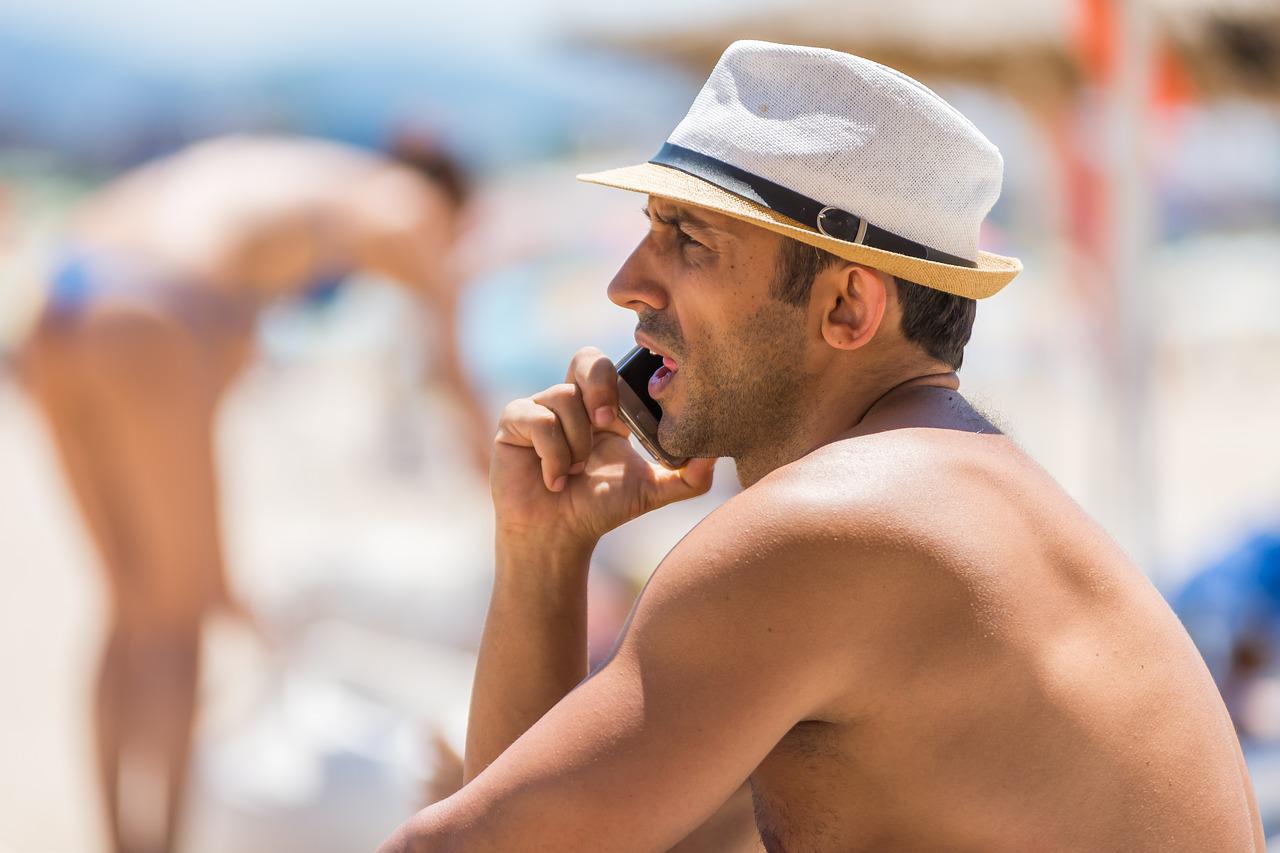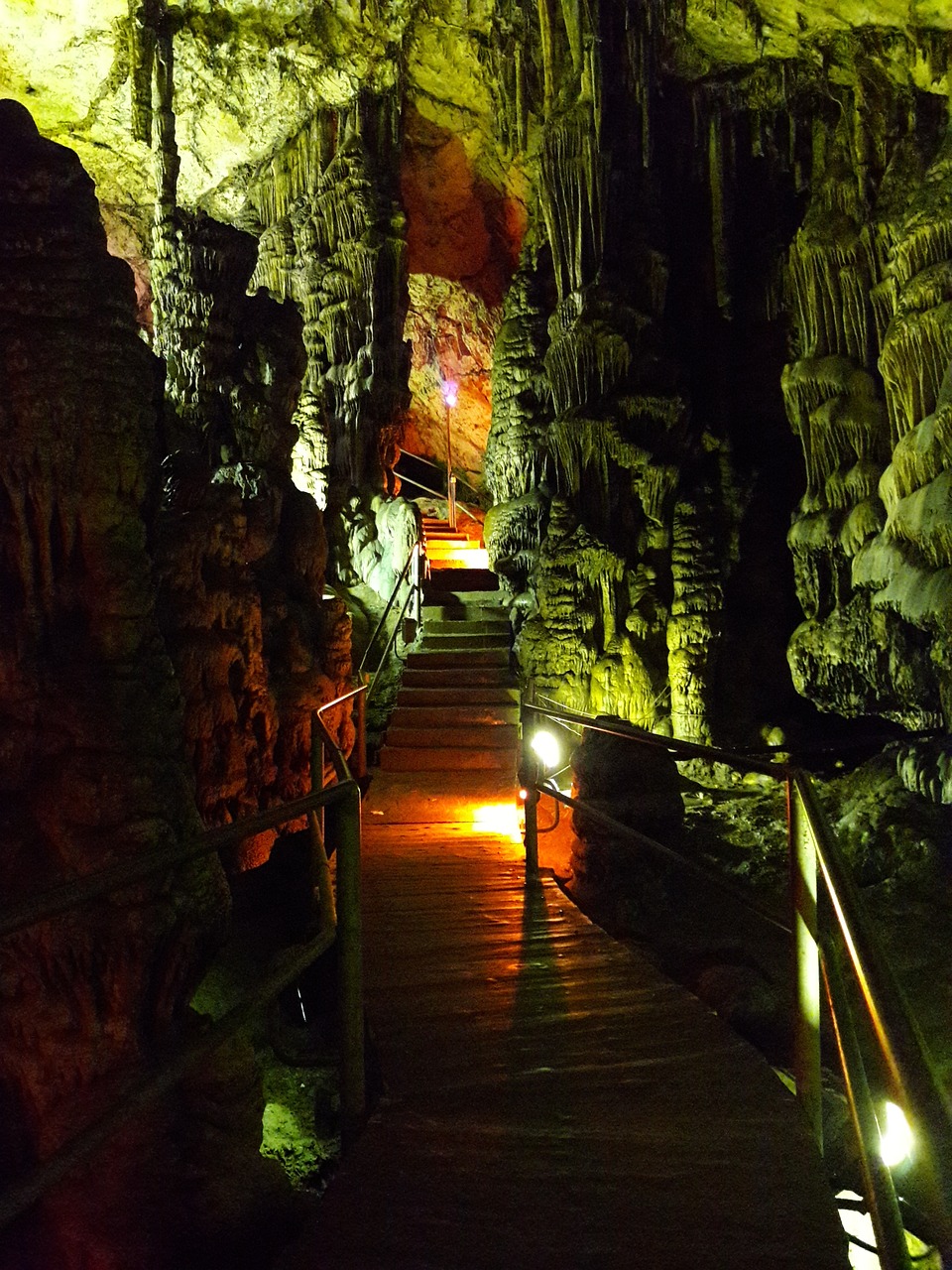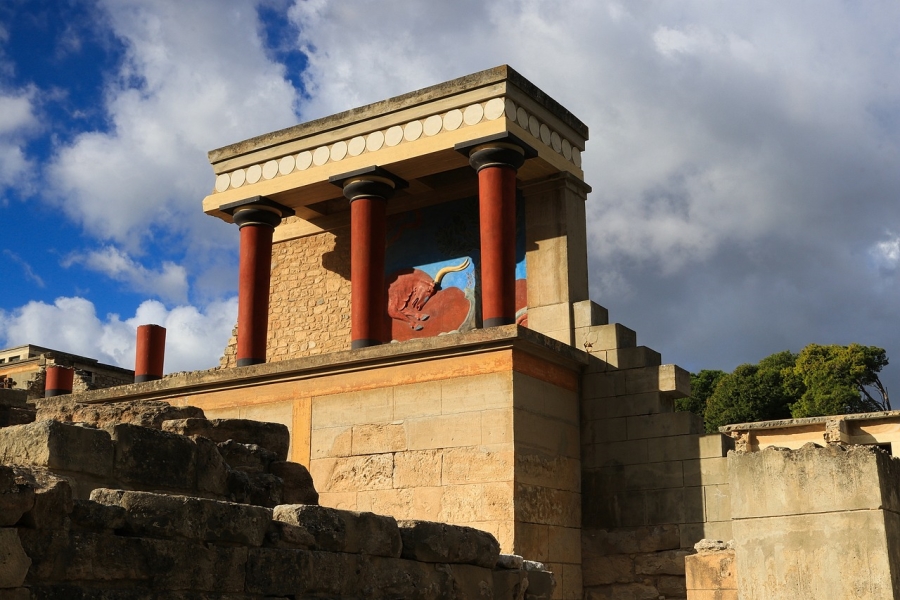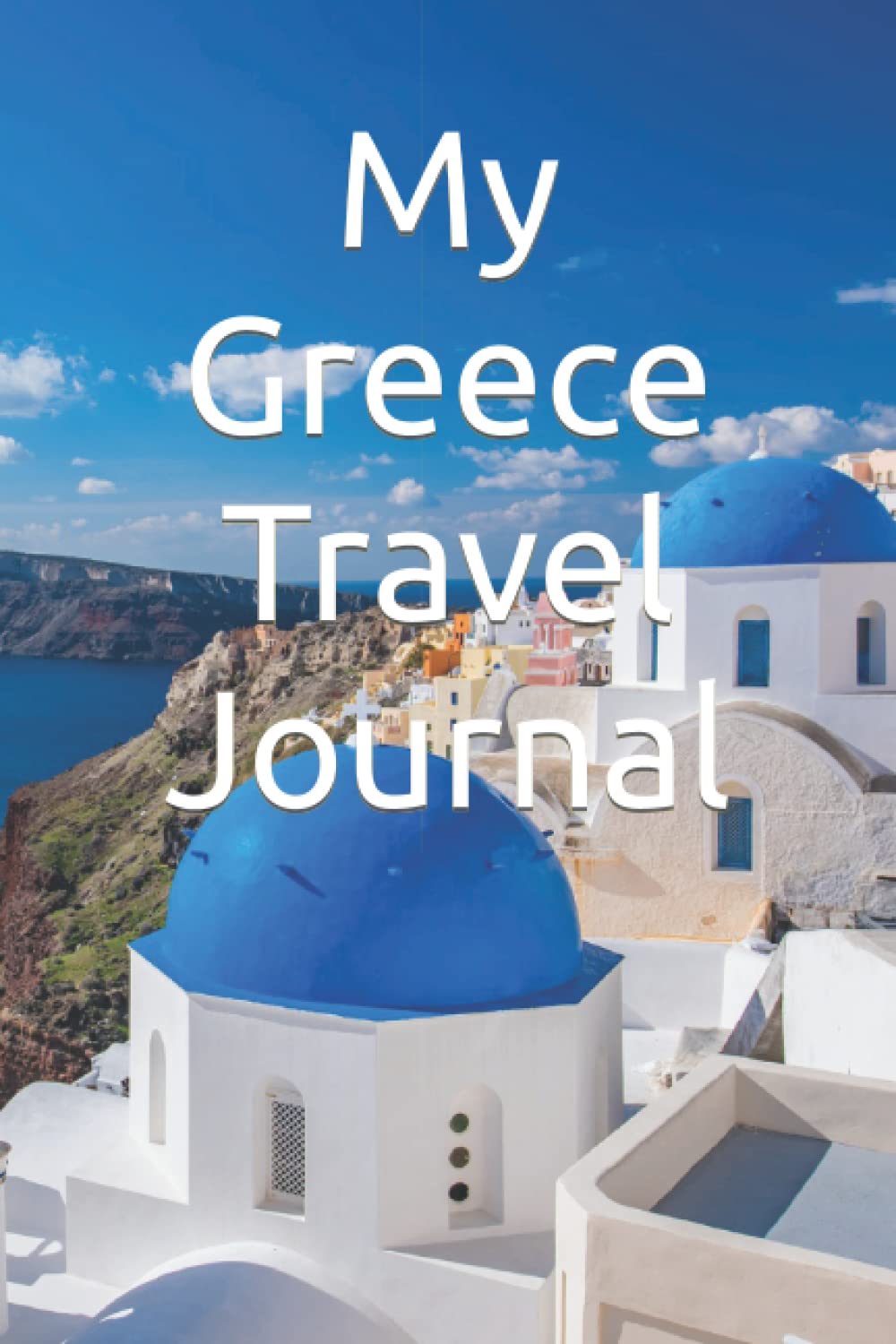Life as a Minoan
What was daily life as a Minoan like on Crete, living in palaces like the ones at Knossos, Malia, Phaistos, and Zakros, and what were their religious beliefs?
Greece may be the birthplace of the Olympic Games, but long before the first torch was carried through a stadium in classical times, Cretan athletes awed the crowds by turning somersaults over the horns of charging bulls.
Europe’s First Civilisation
Crete was the home of Europe’s first civilisation, which flourished here from around 3000 BC until 1100 BC. Amazingly, it lay hidden until, the 20th century, when the English archaeologist Sir Arthur Evans began excavating Knossos.
He called this ancient race the Minoans, after the mythical Greek King Minos. It seems, however, that Minos was a title, not a personal name, rather like the Egyptian Pharoah, and at least 22 rulers bore this name.
These priest-kings built impressive palaces – Knossos, Phaistos, Malia, and Zakros are the largest discovered to date – where they presided over a rich, artistic culture that was highly ritualistic
Bull-Leaping
The Minoans loved games and athletic contests. Bull-leaping satisfied both their appetite for sport and their religious obligation. The athletes would grab a charging bull by the horns, somersault over its back, and land on their feet with arms raised in victory. Both men and women took part in these dramatic feats, which required great courage, agility, and skill.
Impossible? Spanish bullfighters claim that it is, and some scholars believe that the bull-leaping scenes featured in Minoan frescoes may be only symbolic. Indeed, bulls had a strong religious significance in Minoan society. They represented virility and were depicted on vases and in figurines, , and enormous sculpted ‘horns of consecration’ adorned the palace walls.
Ceremonial drinking vessels called rhytons were carved in the shape of a bull’s head. In sacrificial rites thought to be connected to agricultural cycles, a bull was captured and bound, its throat cut, and its blood drained into these sacred cups. This ritual honoured the bull and connected the Minoans to its divine life force.
Bull-leaping, whether or not it actually occurred, may have symbolised the triumph of man over the unpredictable forces of nature.
The Minoan Ages
Chronologically, archaeologists break down the Minoan civilisation into four main periods:
Pre-Palace Period (2600-1900 BC). Bronze Age culture develops on Crete.
Old Palace Period (1900-1700 BC). First Minoan palaces are built but are destroyed by earthquakes.
New Palace Period (1700-1450 BC). Grand new palaces are built and the civilisation reaches its height before a great catastrophe, possibly a tsunami, destroyed all the palaces simultaneously.
Post Palace Period (1450-1100 BC). After the destruction, Minoan civilisation declines as the Mycenaeans move in.
Daily Life as a Minoan
Much of what we know about the Minoans has been gleaned from their beautiful artworks. Impressive frescoes once decorated the walls of the palaces showing, people, animals, and scenes of daily life as a Minoan.
The paintings, incorporating movement and sensuality, were skilfully executed in vibrant colours made from plants, minerals, and shellfish. The artists painted women’s skin white and men’s red. We therefore know from the frescoes that women played an important role in society.
Exquisite sculptures, pottery, mosaics, and decorative arts suggest that the Minoans lived an ancient version of the ‘good life’. Their palace homes had roof terraces, light wells, baths, and sophisticated plumbing systems. They were well fed, with huge granaries and giant vessels, called pithoi, to store wine and olive oil.
The Minoans were also great seafarers, trading their agricultural produce far and wide to acquire copper and tin to make bronze, and gold, silver and precious stones to make jewellery and works of art.
One of the most curious facts about their palaces is that they were built without fortifications, suggesting the Minoans lived peacefully and did not fear enemies. At their height, the Minoans are thought to have numbered over two million people, a figure four times greater than the population of Crete today!
The Double Axe
The double axe was also a dual symbol, representing both the waxing and the waning of the moon and the religious and political power of the priest-king.
Catastrophic Ending
This great civilisation came to a sudden end around 1450 BC when some unknown catastrophe occurred that destroyed all the palaces at the same time. Many scholars believe that the volcanic eruption on the nearby island of Santorini created a deluge of tidal waves, earthquakes, and fires on Crete, which could explain the charred remains found at some of the palaces.
Others favour theories of outside invaders, such as the Mycenaeans, or an internal rebellion against the palace rulers. Whatever the cause, within about 200 years the Minoans had all but disappeared, though the reason may always remain a mystery.
The Snake Goddess
Another potent Minoan religious figure was that of the Snake Goddess, a woman holding a snake in each hand. Her bare breasts symbolised fertility while the snake, which sheds its skin, symbolises healing and rebirth.
The Legend of the Minotaur
Poseidon, god of the sea, sent King Minos a white bull, but when he later requested that it be sacrificed, Minos could not bring himself to kill the beautiful animal. In revenge, the angry god caused the king’s wife, Pasiphae, to fall in love with the bull and their mating produced the Minotaur, a hideous creature with a bull’s head and a man’s body.
Minos kept the monster in a labyrinth beneath the palace, and every nine years fourteen youths were shipped from Athens and fed to the Minotaur.
When Theseus, son of the king of Athens, heard of this he vowed to stop the slaughter. Volunteering to be one of the victims, he entered the palace and then seduced Minos’s daughter, Ariadne, who gave him a sword and a ball of thread to enable him to find the bull, kill it, and then retrace his way out of the labyrinth.
Latest Posts
-
The Lesser-Known Traditions of Greek Easter
Step off the beaten path this spring and discover the enchanting — and often surprising — Easter traditions found across Greece. -
Easter in the Mystical Castle of Monemvasia
In the castle town of Monemvasia, with its dramatic medieval backdrop and sea views, Easter is a deeply spiritual and atmospheric experience. -
Sifnos: Greece’s Hidden Culinary Star on the Rise
Sifnos, a Cycladic island, is gaining fame for its rich culinary heritage, especially the beloved melopita honey-cheese tart. -
Easter in Leonidio: A Tapestry of Light, Culture and Cliffs
In Leonidio, Easter comes alive with handmade hot air balloons in the sky and lanterns made from bitter oranges in the streets. -
April 9 Strike in Greece to Impact Public Transport, Ferries and Air Travel
Transportation and travel across Greece will face disruptions on Wednesday, April 9, as public transport, ferry and aviation workers join a nationwide strike called by Greek labor unions. -
Ancient Theater of Lefkada Brought Fully to Light Following Systematic Excavation
The Greek Culture Ministry has announced that the first ancient theater ever identified in the Ionian Islands has recently been brought fully to light on Lefkada, revealing an impressive monument that… -
Seven Greek Traditions Recognized as Intangible Cultural Heritage
From traditional barrel-making to age-old folk dances, seven new entries on Greece’s National Inventory preserve the country’s living heritage for future generations. -
Greek Air Traffic Controllers to Hold 24-hour Strike, Disrupting Flights on April 9
The Hellenic Air Traffic Controllers Union have announced a 24-hour strike for Wednesday, April 9, in response to the protest called by the Civil Servants’ Confederation (ADEDY). The strike is being h… -
Ten Best Budget Hotels on Santorini
Greece Travel Secrets picks the ten best budget hotels on Santorini, some with caldera views, some near beaches and some close to the heart of Fira. -
No Ferries in Greece on April 9 as Seamen Join Nationwide Strike
The Pan-Hellenic Seamen’s Federation (PNO) has announced its participation in the 24-hour strike called by the General Confederation of Greek Labor (GSEE) on Wednesday, April 9. The strike, which will…
































